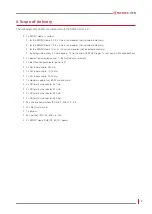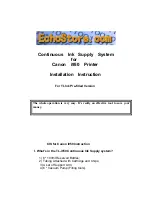
16
3.2.2 Temperature adjustment after transport
Condensate can form inside the storage system if the temperature of the SENEC.Home Li on delivery is below
the ambient temperature of the installation location. In this event, do not start using the SENEC.Home Li until
you have left it standing for at least 24 hours with the side panels open.
3.2.3 Warning and information labels
The following warning and prohibition labels shall be affixed to the system after it has been installed:
•
“Fire, naked flame and smoking prohibited” label.
•
“Rechargeable battery, battery room” warning label
•
Completed identification plate on the left-hand case cover
The installer is responsible for proper installation and compliance with standard EN 50272-2 and other nation-
al standards and regulations regarding the safety of battery systems.
3.2.4 Temperaturbereich
The SENEC.Home Li works best in a temperature range of 0 – 30 °C.
3.2.5 Space requirement and minimum distances
The area shall be suitable for the installation of the SENEC.Home Li.
Plan at least the following installation area (W x H x D):
•
580 mm x 1300 mm x 420 mm
This also takes into account the area required for maintenance and for replacing the battery modules.
Damage to components when operating the SENEC.Home Li!
ä
Check the interior of the SENEC.Home Li for condensation prior to installation.
ä
Only install the SENEC.Home Li if there is no condensation on the surfaces.
Danger to life from fire!
Overheating as a result of mutual heating of the system components is possible.
ä
Do not fit the inverter for the PV installation above or below the SENEC.Home Li.
ä
Ensure that there is a safe distance of at least 500 mm to combustible materials.
Damage to components when operating the SENEC.Home Li!
ä
Do not use the SENEC.Home Li in the open air, or in a room that cannot
be heated in winter.
ä
Never charge the storage system at temperatures below 1 oC.
Temperatures above 45 °C are likewise harmful since the electrolyte
can break down as a result of the heat generated at the anode in addition
to the discharge process.
















































